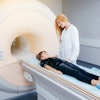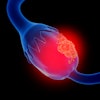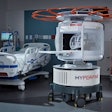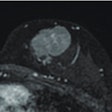An advisory committee of the U.S. Food and Drug Administration (FDA) today voted unanimously to recommend approval for Bayer HealthCare Pharmaceuticals' Gadovist 1.0 (gadobutrol), a gadolinium-based contrast agent for contrast-enhanced MRI of the central nervous system.
The panel also voted 15-1 to allow Gadovist to be labeled without a contraindication for nephrogenic systemic fibrosis (NSF) in the population at risk for the debilitating disease. However, they advised that Gadovist should carry the same black box warning label required of other gadolinium-based contrast agents (GBCAs) sold in the U.S.
On the recommendation for approval, James Tatum, MD, a nuclear medicine physician with the Veterans Administration, echoed the consensus of his panel colleagues. "I feel that safety data and the efficacy data is at least as good as the approved agents and possibly better," he commented after the vote.
Clinical data indicate that Gadovist can be classified as one of the lower-risk gadolinium-based contrast agents in terms of NSF risk, according to panel member Donna Roberts, MD, a neuroradiologist at the Medical University of South Carolina in Charleston and at St. Jude Children's Research Hospital in Memphis, TN.
"Based on the animal studies and postmarketing data, even though we don't have data from clinical use here in the [U.S.], this agent is very similar to other agents already approved," Roberts said. "I would feel comfortable with this agent being labeled as a lower risk."
In a new policy announced in September 2010, the FDA categorized gadolinium-based contrast agents into two categories based on risk of NSF, with agents carrying different warning label language based on risk level. The higher-risk agents were contraindicated for use in patients with acute kidney injury or chronic, severe kidney disease -- these agents include Omniscan (gadodiamide) from GE Healthcare of Chalfont St. Giles, U.K.; Magnevist (gadopentetate dimeglumine) from Bayer of Wayne, NJ; and Optimark (gadoversetamide) from Covidien of Dublin.
Agents in the lower-risk category must still carry warning labels, but they do not require contraindications. These include MultiHance (gadobenate dimeglumine) and ProHance (gadoteridol) by Bracco Diagnostics of Princeton, NJ; Ablavar (gadofosveset) by Lantheus Medical Imaging of North Billerica, MA, and Eovist (gadoxetate) by Bayer. Gadovist will be in this lower-risk category when it receives final approval.
Clinical trial data
In the company's presentation to the FDA advisory panel, Martin Rosenberg, MD, Bayer's senior director of global clinical development, reviewed clinical results from Gadovist's two current phase III trials.
One study compared Gadovist with noncontrast-enhanced MRI, while the second study compared the contrast agent with Bracco's ProHance because of their similar composition.
Evaluations performed by three blinded radiologists concluded that Gadovist's diagnostic accuracy was consistent across both studies for lesion detection, one of four criteria to prove the contrast agent's efficacy. "If we look at the assessment of whether a lesion is malignant or not malignant, what we see versus unenhanced imaging is statistically significant improvements in sensitivity and accuracy without any loss in specificity, an important diagnostic result," Rosenberg said.
In the comparative study with ProHance, Rosenberg offered data indicating that Gadovist matched or exceeded results in all four efficacy categories. "It is also important to note that ProHance met all the primary efficacy criteria as well, which would be expected for a contrast agent approved for [central nervous system] imaging," he added.
NSF association
Part of today's hearing included a discussion on the association between gadolinium-based contrast agents and NSF. Previous research indicates that patients with renal failure are at the greatest risk of contracting the debilitating disease when given gadolinium-based contrast.
Rosenberg told the panel that among the more than 4,500 patients who received Gadovist, 4% of those patients experienced a nonserious adverse event. The nonserious reactions included headache and nausea and were similar in incidence to events with other gadolinium-based contrast agents.
"Most of these events were mild to moderate in intensity and resolved without treatment," Rosenberg said. "We have reported 17 serious events, one of which was considered by the investigator to be related to gadobutrol."
There were two deaths reported in one clinical study. One patient received Gadovist and one patient received ProHance, but Rosenberg said neither fatality was related to the administration of the contrast agents.
Warning label
To reduce the risk of NSF, Bayer proposed that Gadovist's label include the same box warning and precautions and patient counseling information as other gadolinium-based contrast agents.
To minimize the risk of misadministration, Bayer also recommended that Gadovist's standard dose be administered at 0.1 mmol/kg in the U.S. Doses of as much as 0.3 mmol/kg have been approved outside of the U.S., according to Bayer, and have been well tolerated.
Gadovist's "high stability and nonclinical data suggest a low likelihood of harm with those administrations in the population at risk for NSF," Maria Rivas, MD, Bayer's vice president of U.S. medical affairs for diagnostic imaging and general medicine, told the panel.
By Wayne Forrest
AuntMinnie.com staff writer
January 21, 2011
Related Reading
FDA takes Bayer's NDA for Gadovist contrast, August 6, 2010
ACR tackles NSF risk in new gadolinium MRI contrast guidance, June 17, 2010
Gadobenate better than gadopentetate contrast in MRA, May 24, 2010
Bayer settles NSF case with Calif. man, January 28, 2010
Bayer initiates phase III trial, December 1, 2009
Copyright © 2011 AuntMinnie.com


.fFmgij6Hin.png?auto=compress%2Cformat&fit=crop&h=100&q=70&w=100)





.fFmgij6Hin.png?auto=compress%2Cformat&fit=crop&h=167&q=70&w=250)











